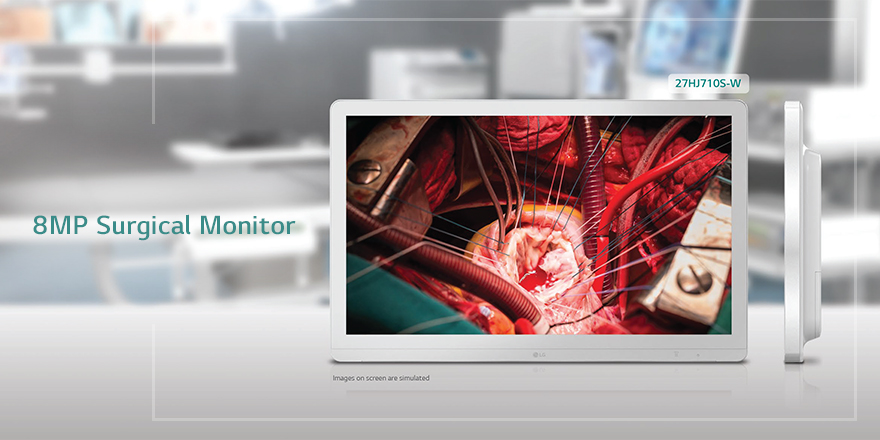
The demand for seeing doctors virtually, rather than in person, has skyrocketed. As a result more doctors are working remotely from home with workstations often equipped with DICOM Part 14 compliant medical-grade monitors, which are far from standard desktop monitors. More radiologists are working from home as well, using medical-grade monitors. And in hospitals and surgical centers, medical-grade monitors are helping surgeons perform critical procedures.
To ensure image accuracy across devices, DICOM (Digital Imaging and Communications in Medicine) Part 14 compliance enables the observer to discern all 256 discernible shades of gray in medical images viewed from various medical imaging modalities. Medical-grade monitors also have IEC60601 safety approval. The power supply is designed to eliminate the danger of shocking or electrocuting the patient. The monitors are shielded to eliminate electromagnetic interference with other critical devices. And they can be used in close proximity to the patient.
We’ll go over three types of medical monitors as well as some of the features that can help keep the monitors functioning at their best for years to come.
Diagnostic Monitors are used by medical professionals to view patients’ medical images in order to make a precise diagnosis. A typical radiology workstation can have from two to four diagnostic monitors.
Important for diagnostic monitors are features such as high brightness, to help doctors discern even the finest details. Internal backlight sensors ensure that the image stays stable, and remote & self-calibration helps the monitors deliver consistent medical images with minimal need for adjustments, so the medical professionals can focus completely on their jobs. An auto luminance sensor can help ensure consistent brightness for DICOM conformance over time. Remote software allows calibration to be managed by IT to ensure image quality and consistency, maintaining accurate values. These features can help enable more professional decision-making, diagnostic confidence and workflow.
Clinical Review Monitors differ from diagnostic monitors in that they are typically used for checking medical images, referral or other activities supporting diagnosis. Used to read CT, MRI and Ultrasound at home, they are DICOM Part 14 compliant for a consistent grayscale so that doctors can double-check data based on accurate medical images. Imaging centers that feed into hospitals also use clinical review monitors for their physicians to read and review images prior to sending. Brightness stabilization, dynamic sync, picture-by-picture (PBP), flicker safe and reader mode are important features to look for.
Surgical Monitors are used in operating rooms, and need to have a high degree of accuracy to help surgeons to perform procedures without incident. With surgical monitors the images are usually fed by cameras; one that the surgeon wears on the head, and another in an endoscope that goes deep into the patient’s body. Surgical monitors need to be able to show accurate colors, especially with shades of red, as the surgeon works in real time.
The surgical environment is one that can create certain issues, and typically requires that the monitors be dustproof and water-resistant, and protected against unexpected contact with substances such as blood, bodily fluids and powdered medication. Other critical features are low input lag and a quick response time, so that the image the camera sees as it moves is displayed virtually instantaneously, and the surgeon doesn’t need to slow down and wait for the image to catch up. Also, flicker safe technology, designed to reduce flickering that can cause eye fatigue, can help the surgeon view images more comfortably for an extended period.
Digital X-ray Detectors are not monitors, but they play a key role as they feed images to the monitors and need to ensure accuracy with the highest image quality. To that end, 16-bit A/D conversion is an ideal feature.
LG medical displays are optimized and built to meet international medical digital image standards, assisting doctors in making precise and accurate medical judgements through a wide selection of products. We’ve created a new LG Medical Display Digital Experience 2020 webpage, where you can check out the latest medical monitors, download data sheets and explore digital signage solutions, too. We invite you to take a tour today.